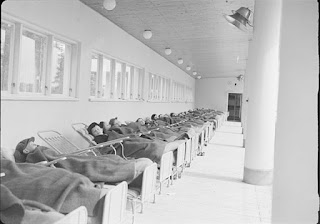‘Nine-tenths of the fallen women in London were once shop
assistants,’ Lord Brabazon said in 1883. Denise, the heroine of Zola’s famous
novel Au Bonheurs des Dames, certainly had a struggle to keep her morals
intact, and not seek extra ‘employment’. Even when they were probably innocent
of soliciting, shopgirls were looked down on as at least ‘cheap’. In Zola’s novel, some of the bourgeois women
think that the shopgirls are ‘all up for sale, the wretches, like their
merchandise’.
Industrialization and imports from the colonies, such as
India, saw the rapid growth in the amount and variety of goods coming from all
over the world, including fine materials, exotic fruits and fancy china.
Department stores and specialist shops sprung up throughout the country. Women
began to enjoy shopping for leisure, and they preferred to be served by young
women rather than men. Jessie Boucherett founded the Society for Promoting the
Employment of Women to promote women shop assistants. ‘She asked pointedly, “Why
should bearded men be employed to sell ribbon, lace, gloves, neck-kerchiefs,
and the dozen other trifles to be found in a silk mercer's or haberdasher’s
shop”?[i]
Many girls started to want independence, and a better career
than being a servant. Being a shopgirl was increasingly regarded as ‘respectable,’
and they received better wages than servants. Shopkeepers preferred to employ
girls and young women, because their wages were much lower than those of male shop
assistants. The wages were usually two-thirds or even half the amount that
their male counterparts received. It was also a cleaner and less physically
demanding occupation than factory work.
Unfortunately, many girls who got jobs working in shops didn’t
know what they were in for. Low wages were not their only problem. They often
had to work incredibly long hours from early in the morning until late at
night. Sometimes they worked until midnight on Saturday if they got Sunday off.
Understandably, they were usually too tired to go to church on Sundays. The
battle for a half-day on Saturday was a surprisingly long one. They also had to
pay fines if they breached any of the numerous rules. Whiteleys had over 100
rules.
The shopgirls often had to live-in. This usually meant
living in crowded dormitories with nasty food, which they often had to buy. Many
received meagre breakfasts while they watched the shop managers and superior
staff eating bacon and eggs. Margaret Blomfield, the first woman Cabinet
minister in the UK, worked as a shopgirl when she was sixteen in a large draper’s
shop in Brighton. She was incredibly unhappy, sleeping in a bare crowded
dormitory, which was ‘incredibly hot in summer’ and ‘miserably cold in winter’.
It was so difficult to get a bath that to get a hot bath once a week the girls
had to run ‘at full speed for about half a mile’ to the public baths. Then they
only had a quarter of an hour to undress, bathe and dress before the assistant
ordered them out because the baths were about to close.[ii]
She was also incredibly scared when men knocked at the
ground-floor windows, and tried to pull them down during Race Week. They had a
struggle to slam and bolt the windows.
Margaret decided to join the Union, and spent time secretly
observing conditions. She wrote about them as Grace Dare. Vaughan Nash used her
reports in The Daily Chronicle, and they attracted the attention of Sir
John Lubbock, who used them to improve living-in conditions in The Shop
Assistant’s Act.
Conditions Improve
Even though the Coal Mine Act was passed in 1842, the first
committee on shop conditions only reported toa Parliament forty years later.
There were three committees, but nothing was done, because opposition remained
strong for three main reasons. Many thought that the State shouldn’t interfere
with working hours. Shopkeepers felt obliged to be at the mercy of the
customer, and the need for profits was difficult and competitive. Also, shop
assistants mostly didn’t want to join a union, because they felt that it was
beneath them.[iii]
A few acts of Parliament improved conditions, but it wasn’t
until the Shop Assistants Act of 1911 that a statutory half-day and a mandatory
weekly holiday were introduced. The next two acts of 1912 and 1913 shortened
the maximum weekly working hours, and made washing facilities mandatory in
every shop.
[i]
‘Association for Promoting the Employment of Women’, English Woman’s Journal,
vol.4, September 1859, p.57, quoted in Horn, Pamela and Annabel Hobley, Shopgirls,
The True Story of Life Behind the Counter, Hutchinson, London, p.45
[ii]
Horn, Pamela and Annabel Hobley, Shopgirls, The True Story of Life Behind
the Counter, Hutchinson, London, p.90
[iii]
Whitaker, Wilfred B. Victorian and Edwardian Shopworkers. The Struggle to
Obtain Better Conditions and a Half-Holiday. David & Charles Newton
Abbot, 1973, p.180
